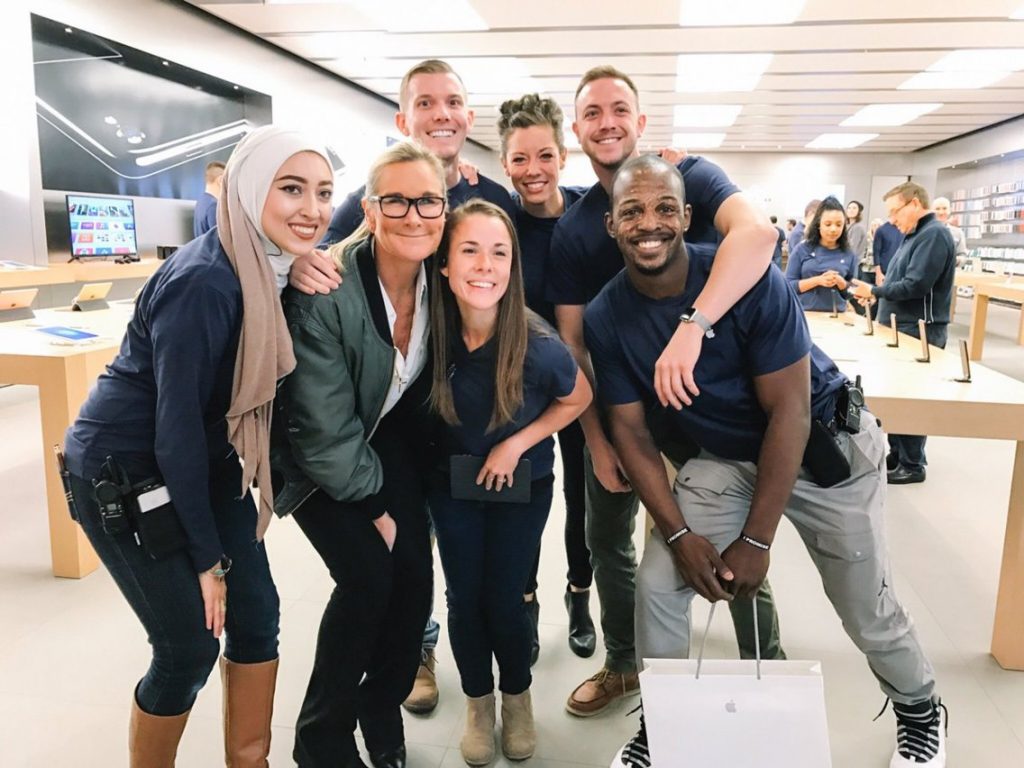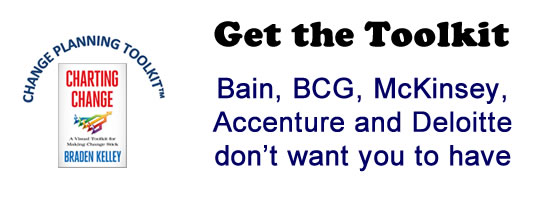Four Things You Can Learn From the Retail Genius Behind the Apple Store
Four immutable lessons on how to create a brand that blows away the competition and keeps customers for life.

I’ll confess at the very outset that I’ve been an Apple groupie for longer than I care to admit. My first personal computer was a Mac. And through all of Apple’s ups and downs, and a few breakups (ummm … remember the Newton?), I’ve always come back to a place that felt very much like home. In large part it was because Apple always felt as though it were my brand.
That’s a very odd way to describe my relationship with a computer, right? It sounds more like the description of a relationship with a life partner!
Yet that’s the magic of Apple. You are part of a community with an underlying shared ethos and values that transcend the technology, but you are also in a very personal relationship with the brand.
It should have been no surprise, then, that Tim Cook reached out to and finally brought on board Angela Ahrendts, former CEO of London-based Burberry, to run Apple’s retail operations in 2013.
Blurring the Lines
Ahrendts was already at what many people would see as the pinnacle of her career. She had transformed Burberry from an iconic yet tired brand to a contemporary fusion of online and in-store experience, with the emphasis on experience. Some of what Ahrendts had done was revolutionary in the retail industry. While many were speculating that retail was on its last legs, especially with Millennials and Gen-Z, she created stores that drew youth in better than a Skrillex concert serving free Red Bull.
I recall bringing my 16-year-old son, Adam, to New York City for a long weekend a few years back. I was meeting with a friend on Central Park South and Adam asked me if he could go out to walk around and maybe do some shopping. A few hours later he came back toting a lovely Burberry bag. I looked surprised: He had a smile stretching from ear to ear. I wondered what in the world Adam could have gotten at Burberry; trenchcoats weren’t his style. He proudly pulled a hoodie out of the bag — lined in Burberry’s trademark check pattern and costing about as much as our plane tickets from Boston.
I knew in that instant that the Burberry I once knew was long gone. If my Gen-Z son was going to blow his weekend shopping budget on a hoodie, something was going on that I needed to pay attention to. It just so happened that the client I was visiting had worked with Ahrendts as a CEO coach for years and was more than impressed by her ability to tune in to the mindset of customers and build a new community around the Burberry brand, which blurred the boundaries between the offline and online worlds.
That’s the reason she made such perfect sense for Apple: She understood the dynamics of building what I call a “loyal brand,” a brand that understands its customers in a way that earns their respect, influence, and admiration in a way that makes them want to be part of the brand’s story.
While Ahrendts may have seemed an odd fit for a tech company like Apple, I can’t imagine anyone better suited for the job.
Messing With Success
During her four years at Apple, Ahrendts has kept a fairly low profile, avoiding most media coverage while she quietly re-engineers what are already the most effective retail stores on the planet, based on revenue per square foot — to be precise, $5,500 per square foot, almost twice that of a Tiffany store at $2,900.
Messing with that sort of success is one hell of a risk. But this is where Apple has always been ahead of the curve. While many companies innovate only when they have to, Apple innovates because it wants to. And the best time to do that is not when your stock and your business model have tanked but when you’re sitting on a quarter of a trillion dollars in cash.
So what has Ahrendts done so far? A few things are already notable in many of Apple’s stores. Take, for example, in-store concierge service, text messages to Apple users that make traffic at the Genius Bar flow much more smoothly, a dismantling of the Bar in favor of a much more intimate setting where customers and Geniuses sit together on low stools, or an in-house program that invites Apple employees to submit ideas on innovation and chance.
But these are all incremental changes. The really big stuff is about to break at the end of May with what the company calls Today at Apple, a radical new in-store experience that was piloted at its San Francisco Union Square and London Regent Street stores in 2016.
In many ways Ahrendts is taking what she did at Burberry and Applefying it. Today at Apple will be rolled out next month across all 500 Apple stores. It’s a bold move toward creating an in-store experience that reinforces the sort of intimate and very personal relationship that a great brand has to have with customers in order to build a life partnership with them.
In an interview on CBS This Morning, Ahrendts talked about the underpinnings of Apple’s success and the way in which the in-store experience will morph to meet the changing dynamic of the marketplace.
What Ahrendts described is a master class for building a strong brand, and it applies equally to your growing small business and a powerhouse like Apple. I ask you to think seriously about how your company is achieving each of these goals, because in my mind they are the immutable rules for how any brand connects with its customers.
1. Build a community.
Nothing is more powerful than a sense of belonging. Community is perhaps the single greatest force that draws us and binds us. Apple has been a master of community. It gives you a sense of belonging to something that not only is greater than yourself but also allows you to be better as a part of that community than you would be without it.
That may sound strange when applied to a brand, but the reality is that the greatest challenge and achievement of any company is to create this sense of belonging among its customers.
Although technology is making some aspects of community building much easier, it’s still no replacement for the bond that gets created face-to-face.
As Ahrendts said in her CBS interview:
I think that’s where the human communication comes in, you know? I don’t care how advanced technology gets. I don’t think that there’s anything that can replace looking someone in the eyes, touching their hand, you know? That feeling, if you will, that I don’t care how many millions of Facebook friends you have. You don’t get that feeling. So I do think that it’s getting back to this incredible human connection and — and isn’t that how incredible things happen as well?
ASK THIS: Do your customers feel that they are part of a community? Do you nurture and respect that community?
2. Tell a story.
It always amazes me how many companies fail to tell their story in a way that illustrates their core values and the purpose of their products. I’ll give you an example. Answer this question: What is your company’s core competency? If you think immediately of a product, you’re wrong. Your core has to do with a much greater purpose than any one product.
Apple’s core has always been the ability to make technology as simple and elegant as possible. If you think back to early Macs, the first iPods, the iPhone, each of these stepped into an apparently saturated marketplace and radically simplified it while enhancing the user experience with extraordinary design.
Your core is your story–the narrative that allows you to easily write a new chapter in your company’s evolution. When you know your core, you can move from product to product with ease; you’re never stuck in the inevitable decline of any one product or even any one industry. Your story never ends.
According to Ahrendts,
Great brands and great businesses have to be great storytellers, too. We have to tell stories, emotive compelling stories, and even more so because we’re nonfiction. We’re building a lifelong relationship with people, and every great relationship has to be built on trust.
At Burberry Ahrendts even went so far as to commission a cultural anthropologist to write a book about the company’s history!
ASK THIS: Where’s your story? Do you share it with your company and your market?
3. Align with Gen-Z.
It’s no secret that Millennials and Gen-Z are driving much of the change in how we market and sell. But the key here is to focus not on the marketing and selling, but rather on their lifestyle. Integrate with that and the marketing and selling become by-products of the connection you have with your customers. At a 2015 Fast Company conference Ahrendts said, as she waved a mobile phone,
If you want to keep the next generation and if you want them to be united, you have to see this is how they live. You have to blow up all your existing policies — everything! — and rebuild them around this.
It sounds ridiculously simple, but think of your own experience with the brands you interact with. How many have truly created a mobile experience that you want to be part of and look forward to? The magic in what Ahrendts is doing is to make that online mobile experience something that can easily integrate with the in-store experience.
Ahrendts actually called out Gen-Z specifically in her CBS comments:
A lot of the big online guys have said they’re opening stores. Amazon’s investing in stores. Google’s investing in stores…. Starbucks figured it out, you know? Being a gathering place for — right? “Meet me at Starbucks.” I’ll know we’ve done a really, really great job if the next generation, if Gen-Z says, “Meet me at Apple. Did you see what’s going on at Apple today?”
ASK THIS: Are you using technology to connect with the lifestyle of Gen-Z?
4. Create an emotional experience.
We’ve been hearing for nearly two decades now about the critical importance of a seamless multi-channel customer experience. Yet few companies have really been able to pull this off, in part because the technology just wasn’t advanced enough to be able to follow the customer through his or her full journey off- and online. That’s changed. If you’re not part of that entire journey, you will not be able to integrate fully into the lives of your customers.
Even while she was at Burberry, Ahrendts saw the importance of this and created what has become the poster child for blurring the lines between online and offline: “From the store windows, the store touch-points, the website, social media, or a magazine: It has to be one pure customer experience, not just to gain market share but to gain mind share.”
The mind share Ahrendts talks about is possible only when you deliver highly personalized and intimate experiences to your customers, on their own terms.
For example, while at Burberry Ahrendts created a web and in-store experience that included streaming a new service called Burberry Acoustic in stores and online. Upcoming artists were featured on the Burberry website as well as streamed in stores, blurring the lines between physical and digital. Going to a Burberry store was like walking into the company website. According to Ahrendts, “We put music first, we put emotions first.”
ASK THIS: Do you have an emotional attachment with your customers?
You may look at what Ahrendts has done and think, “But that’s Apple, they’re huge and I’m just a small player in comparison. I don’t have 500 retail stores and $250B in the bank!” But these aren’t lessons based on your size. They are lessons on how to build the sort of immutable bond between you and your customers that will create a partnership for life.
This article was originally published on Inc.
Image credit: businessinsider UK
Wait! Before you go…
Choose how you want the latest innovation content delivered to you:
- Daily — RSS Feed — Email — Twitter — Facebook — Linkedin Today
- Weekly — Email Newsletter — Free Magazine — Linkedin Group
 Tom Koulopoulos is the author of 10 books and founder of the Delphi Group, a 25-year-old Boston-based think tank and a past Inc. 500 company that focuses on innovation and the future of business. He tweets from @tkspeaks.tom
Tom Koulopoulos is the author of 10 books and founder of the Delphi Group, a 25-year-old Boston-based think tank and a past Inc. 500 company that focuses on innovation and the future of business. He tweets from @tkspeaks.tom
NEVER MISS ANOTHER NEWSLETTER!
LATEST BLOGS
Four ways you can ensure employees take accountability for their work
One of the most important driving factors for any successful business is a high-performing team. Having people working for you…
Read MoreWhat is digital upskilling and why is it important?
Photo by Annie Spratt on Unsplash In a world of business that never stands…
Read More


